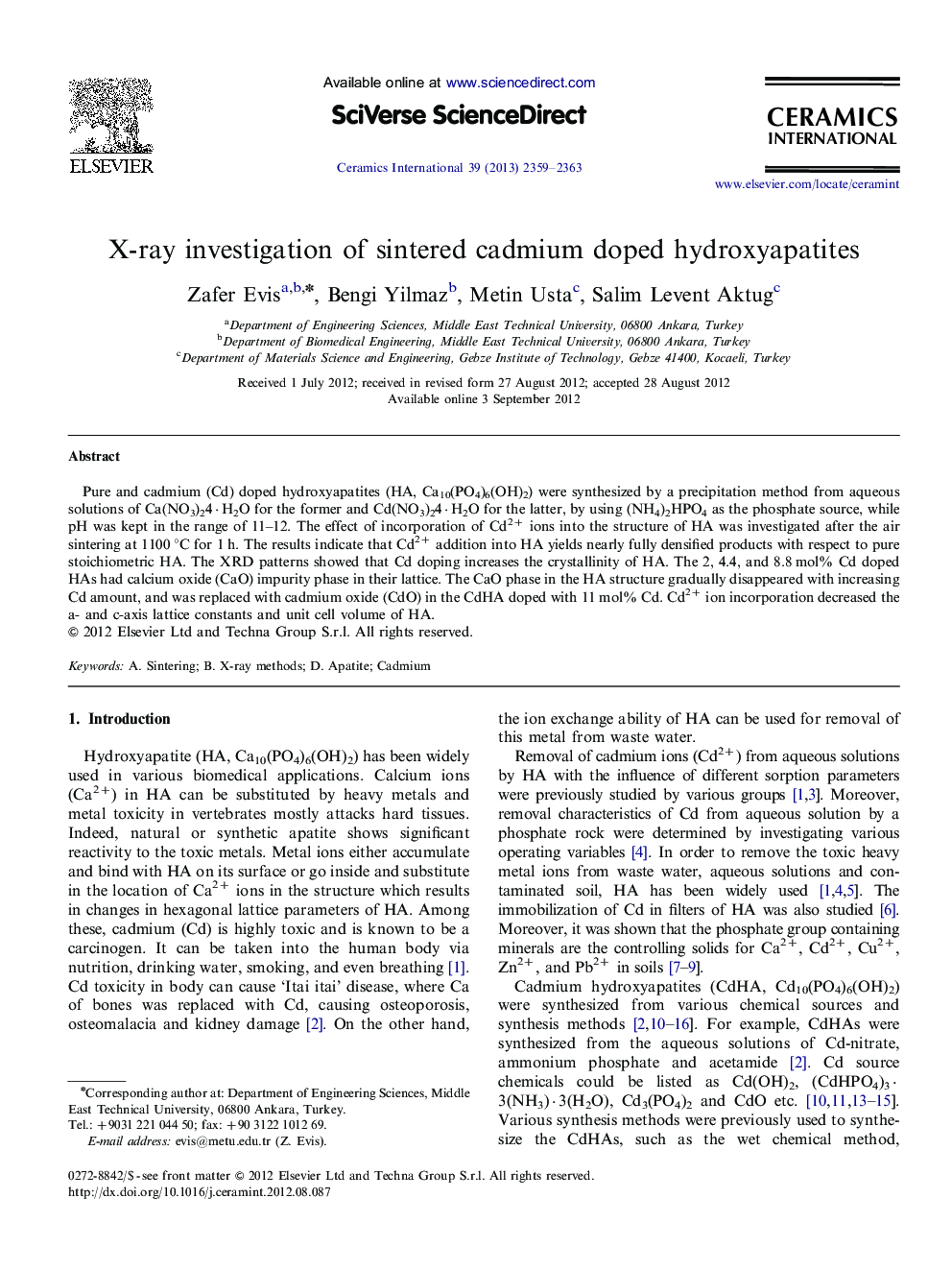| Article ID | Journal | Published Year | Pages | File Type |
|---|---|---|---|---|
| 10626061 | Ceramics International | 2013 | 5 Pages |
Abstract
Pure and cadmium (Cd) doped hydroxyapatites (HA, Ca10(PO4)6(OH)2) were synthesized by a precipitation method from aqueous solutions of Ca(NO3)24·H2O for the former and Cd(NO3)24·H2O for the latter, by using (NH4)2HPO4 as the phosphate source, while pH was kept in the range of 11-12. The effect of incorporation of Cd2+ ions into the structure of HA was investigated after the air sintering at 1100 °C for 1 h. The results indicate that Cd2+ addition into HA yields nearly fully densified products with respect to pure stoichiometric HA. The XRD patterns showed that Cd doping increases the crystallinity of HA. The 2, 4.4, and 8.8 mol% Cd doped HAs had calcium oxide (CaO) impurity phase in their lattice. The CaO phase in the HA structure gradually disappeared with increasing Cd amount, and was replaced with cadmium oxide (CdO) in the CdHA doped with 11 mol% Cd. Cd2+ ion incorporation decreased the a- and c-axis lattice constants and unit cell volume of HA.
Related Topics
Physical Sciences and Engineering
Materials Science
Ceramics and Composites
Authors
Zafer Evis, Bengi Yilmaz, Metin Usta, Salim Levent Aktug,
